Related Research Articles

Arthur LeRoy Bristol, Jr., was a vice admiral in the United States Navy, who held important commands during World War I and World War II, and was an early aircraft carrier commander.
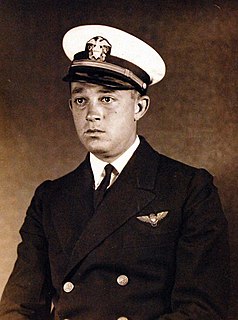
Clifton Albert Frederick "Ziggy" Sprague was a World War II-era officer in the United States Navy.
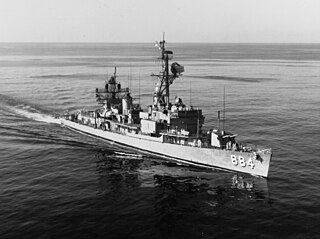
USS Floyd B. Parks (DD-884) was a Gearing-class destroyer in service with the United States Navy from 1945 to 1973. She was scrapped in 1974.
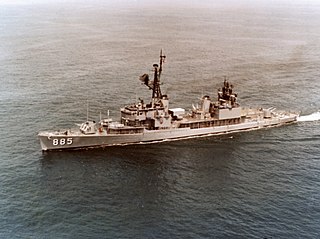
USS John R. Craig (DD-885) was a Gearing-class destroyer in service with the United States Navy from 1945 to 1979. She was sunk as a target in June 1980.

USS Gearing (DD-710) was the lead ship of her class of destroyers in the United States Navy. She was named for three generations of the Gearing family, Commander Henry Chalfant Gearing, Sr., Captain Henry Chalfant Gearing, Jr. and Lieutenant Henry Chalfant Gearing, III.

The Mahan-class destroyers of the United States Navy were a series of 18 destroyers of which the first 16 were laid down in 1934. The last two of the 18, Dunlap and Fanning, are sometimes considered a separate ship class. All 18 were commissioned in 1936 and 1937. Mahan was the lead ship, named for Rear Admiral Alfred Thayer Mahan, an influential historian and theorist on sea power.
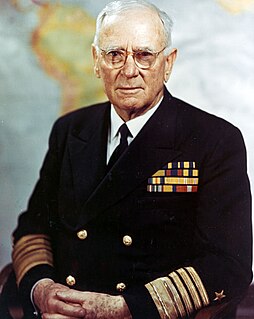
William Harrison Standley was an admiral in the United States Navy, who served as Chief of Naval Operations from 1933 to 1937. He also served as the U.S. ambassador to the Soviet Union from 1941 until 1943.

Norman (Nicholas) Scott was a rear admiral in the United States Navy, and was one of only two U.S. Navy admirals killed in action during a surface battle in World War II. Scott posthumously received the Medal of Honor for his actions in the Pacific Theater of World War II.

USS Doneff (DE-49) was an Evarts-class destroyer escort which served in the United States Navy in the Pacific Theater of Operations. The only encounter with the Imperial Japanese Navy was the sighting of one or two A6M Zero fighters during the operational time spent in the Aleutian Islands.

USS Harry E. Hubbard (DD-748), was an Allen M. Sumner-class destroyer of the United States Navy.

David Worth Bagley was an admiral in the United States Navy during World War II. He was also the brother of Ensign Worth Bagley, the only United States Navy officer killed in action during the Spanish–American War, and the father of Admirals David H. Bagley and Worth H. Bagley.

USS Hamner (DD-718) was a Gearing-class destroyer in the United States Navy during the Korean War and the Vietnam War. She was named for Henry R. Hamner.

USS Tolman (DD-740/DM-28/MMD-28) was a Robert H. Smith-class destroyer minelayer in the United States Navy.

USS Doherty (DE-14) was an Evarts class destroyer escort constructed for the United States Navy during World War II. She was sent off into the Pacific Ocean to protect convoys and other ships from Japanese submarines and fighter aircraft. She performed escort and antisubmarine operations in dangerous battle areas and returned home safely at war's end.

USS Martin H. Ray (DE-338) was an Edsall-class destroyer escort built for the U.S. Navy during World War II. She served in the Atlantic Ocean and the Pacific Ocean and provided destroyer escort protection against submarine and air attack for Navy vessels and convoys.

USS Rolf (DE-362) was a John C. Butler-class destroyer escort in service with the United States Navy from 1944 to 1946. She was scrapped in 1973.

USS La Prade (DE-409) was a John C. Butler-class destroyer escort in service with the United States Navy from 1944 to 1946. She was scrapped in 1973.

USS Jack Miller (DE-410) was a John C. Butler-class destroyer escort acquired by the U.S. Navy during World War II. The primary purpose of the destroyer escort was to escort and protect ships in convoy, in addition to other tasks as assigned, such as patrol or radar picket. Post-war, she returned home proudly with two battle stars to her credit.

USS Odum (APD-71), ex-DE-670, was a United States Navy high-speed transport in commission from 1945 to 1946.
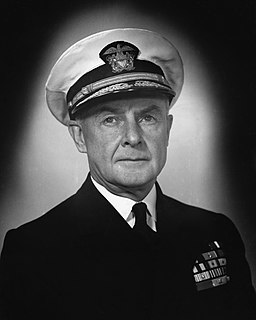
Vice Admiral Frank Jacob Lowry was an officer in the United States Navy who served in World War I and World War II. A 1911 graduate of the United States Naval Academy, he served on submarines during World War I. During World War II, he commanded the cruiser USS Minneapolis at the Battle of the Coral Sea, for which he was awarded the Navy Cross, and the Battle of Midway. He commanded the VIII Amphibious Force in the landings at Anzio and Southern France. He retired from the Navy in March 1950, and received a tombstone promotion to vice admiral due to his combat decorations.
References
- United States. Naval History Division. Dictionary of American Naval Fighting Ships . Retrieved 2021-05-01.
- ↑ "VMH: HENRY C. GEARING, III, LT, USN". USNA Virtual Memorial Hall. 1912-08-06. Retrieved 2021-05-01.
This article incorporates text from the public domain Dictionary of American Naval Fighting Ships .